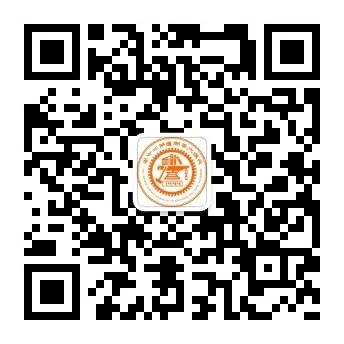






Arduino Design Course (Part Four)

The Dream Car


Course Introduction

No ceremony is needed to set off; the Dream Car has already started, and the future is promising.
On April 18, 2025, the spring currents surged through the wires as thirty sixth-grade mechanical engineers from Shanghai Jiao Tong University Affiliated Second Middle School, filled with dreams of autonomous driving, embarked on the creation journey of the “Dream Car” under the magical guidance of the mentors from the School of Electronic Information and Electrical Engineering at Shanghai Jiao Tong University.
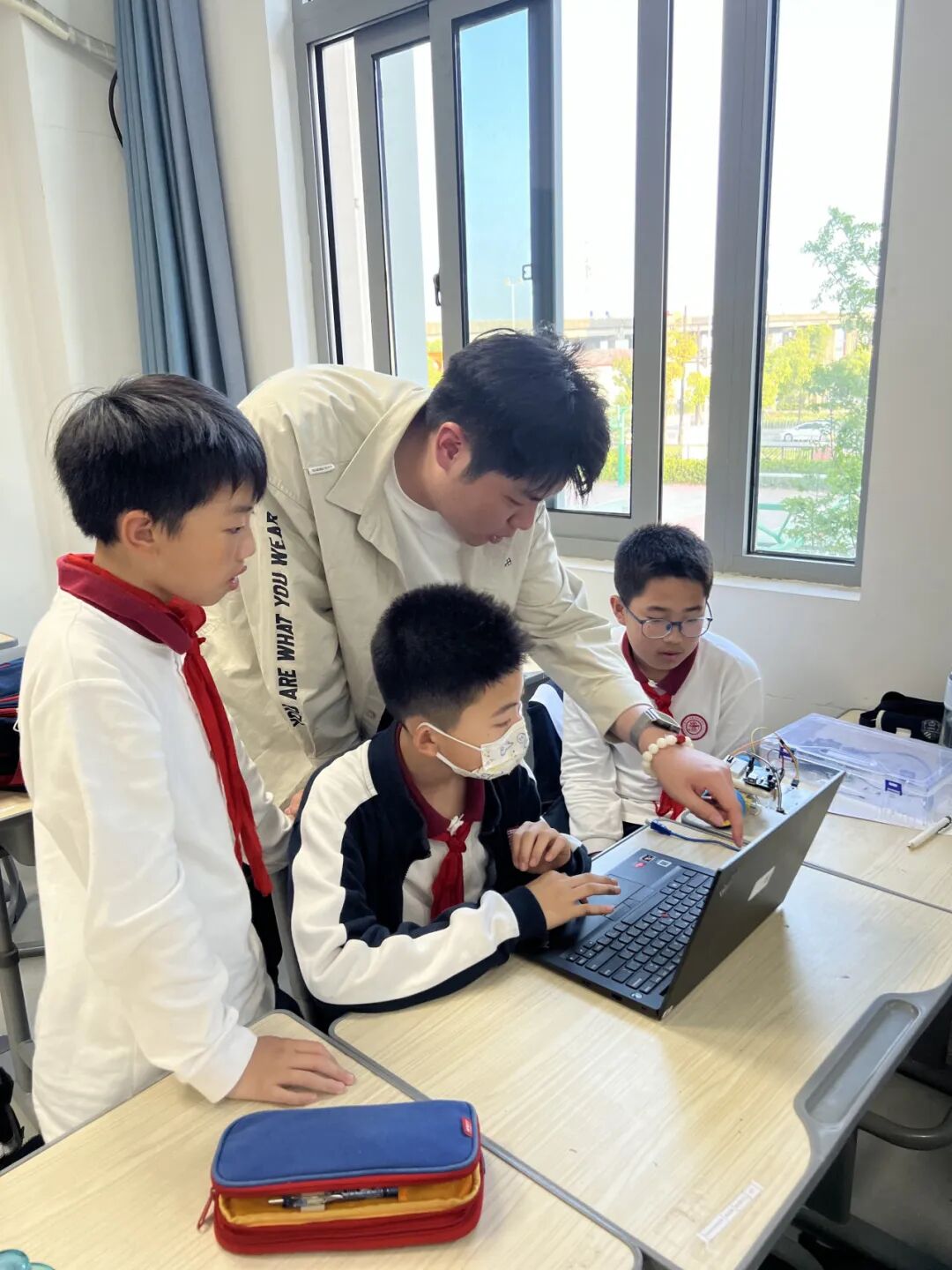
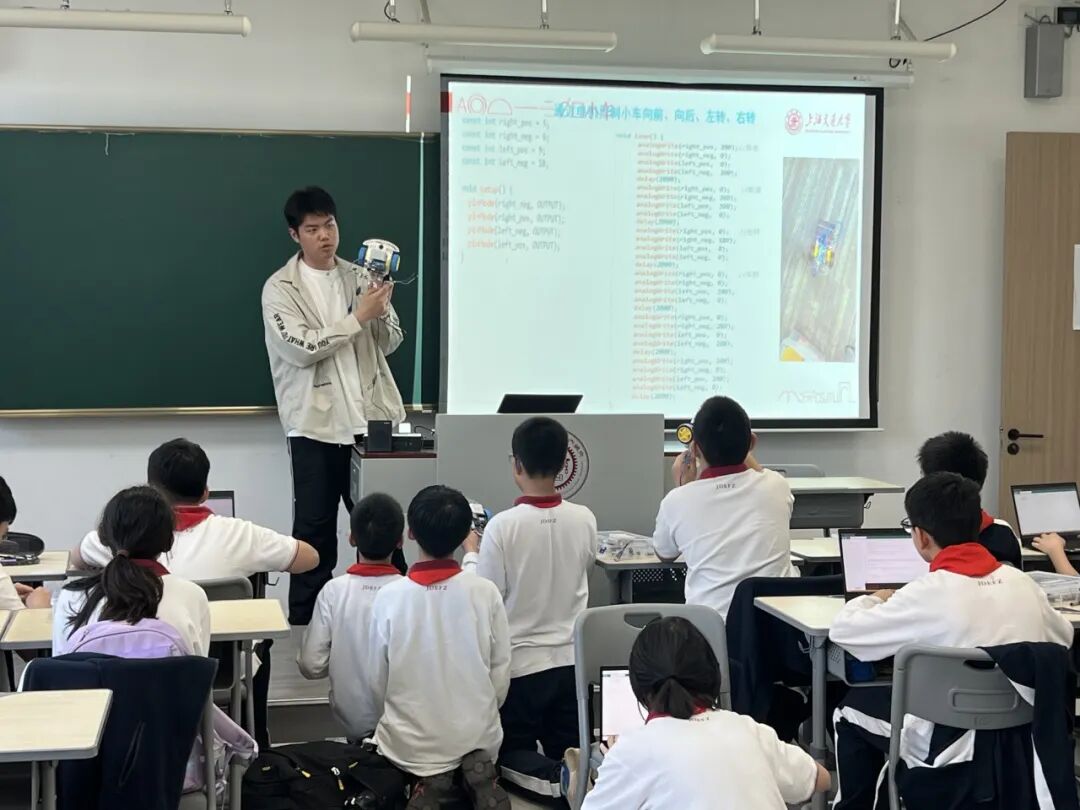
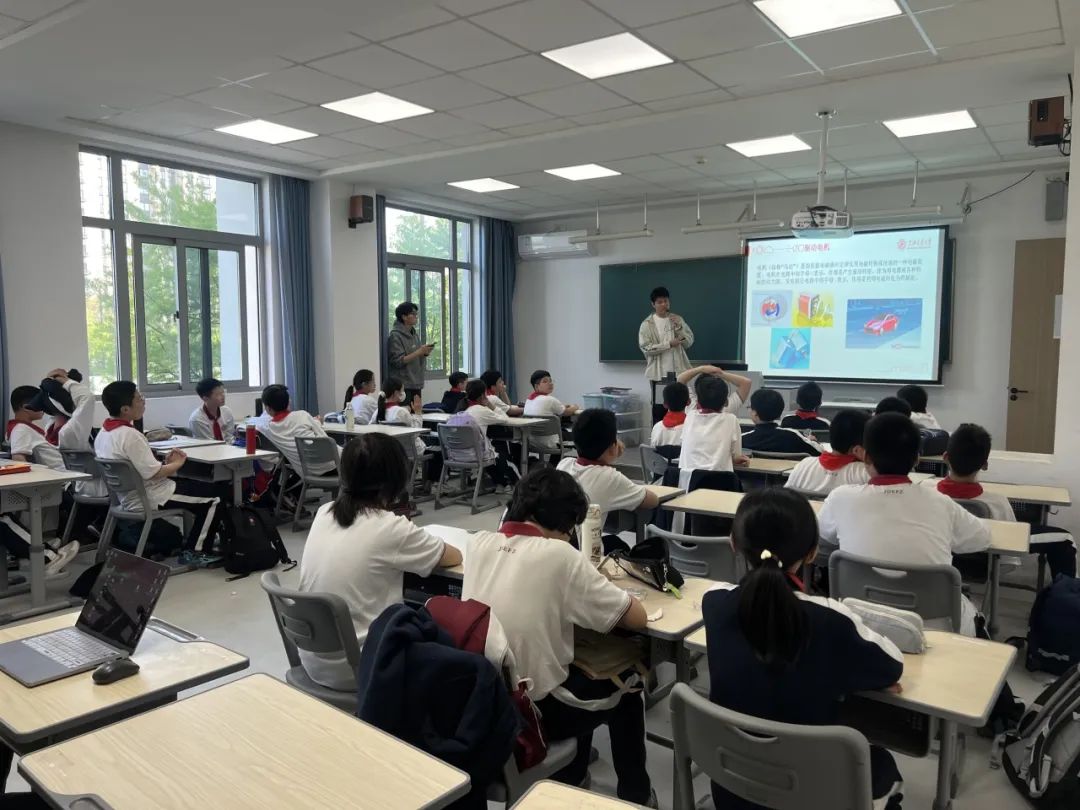
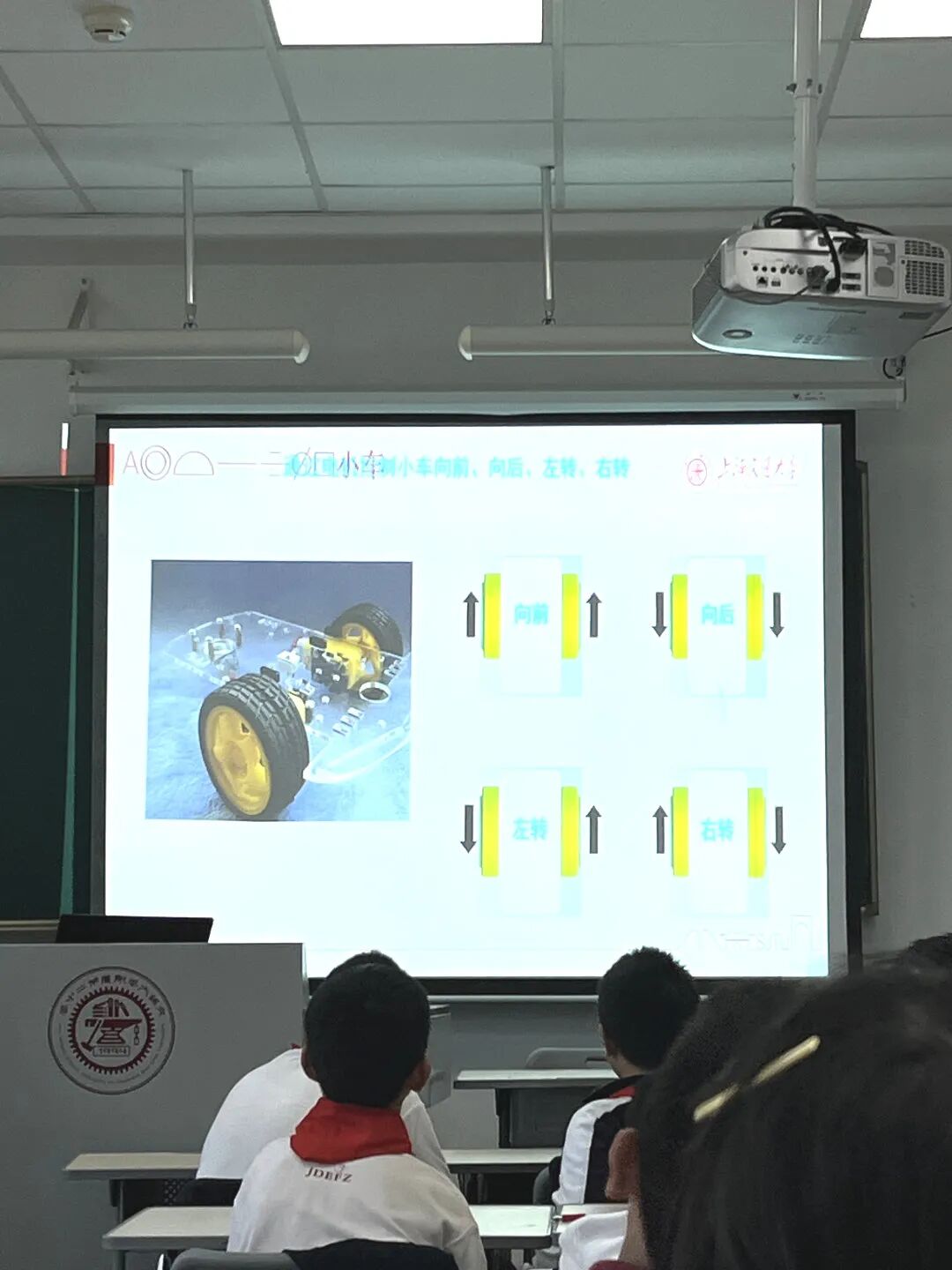
The course opened with a technological trinity: the students lightly touched the ultrasonic sensor—this mechanical nightingale’s sonar wings, deciphering the time code of ultrasonic pulses and echoes; their fingers wandered through the copper wire jungle of the drive motor—this steel beast’s energy heart, feeling the invisible reins woven by Lorentz force in the magnetic field; finally, they gazed at the flowing code on the screen—this silicon-based life’s genetic map, witnessing how ASCII characters transform into the primal kinetic energy of rolling wheels. When the three-wheeled, two-drive laser radar intelligent car chassis was placed on the experimental table, the mentors wove the neural network of driving logic with their fingertips: two motors like the hooves of mechanical steeds, and the motor drive module as the reins to control them. Under the command of the Arduino development board, the PWM speed regulation transformed into the rhythm of energy pulses, and the forward and reverse control performed the magical dance of movement. Some students rested their chins on their hands, gazing at the myriad pins on the main control board, as if reading the hieroglyphs of mechanical civilization; their neighboring partners used breadboard jumpers to outline three-dimensional circuit poetry, turning the roar of motors into binary love letters.
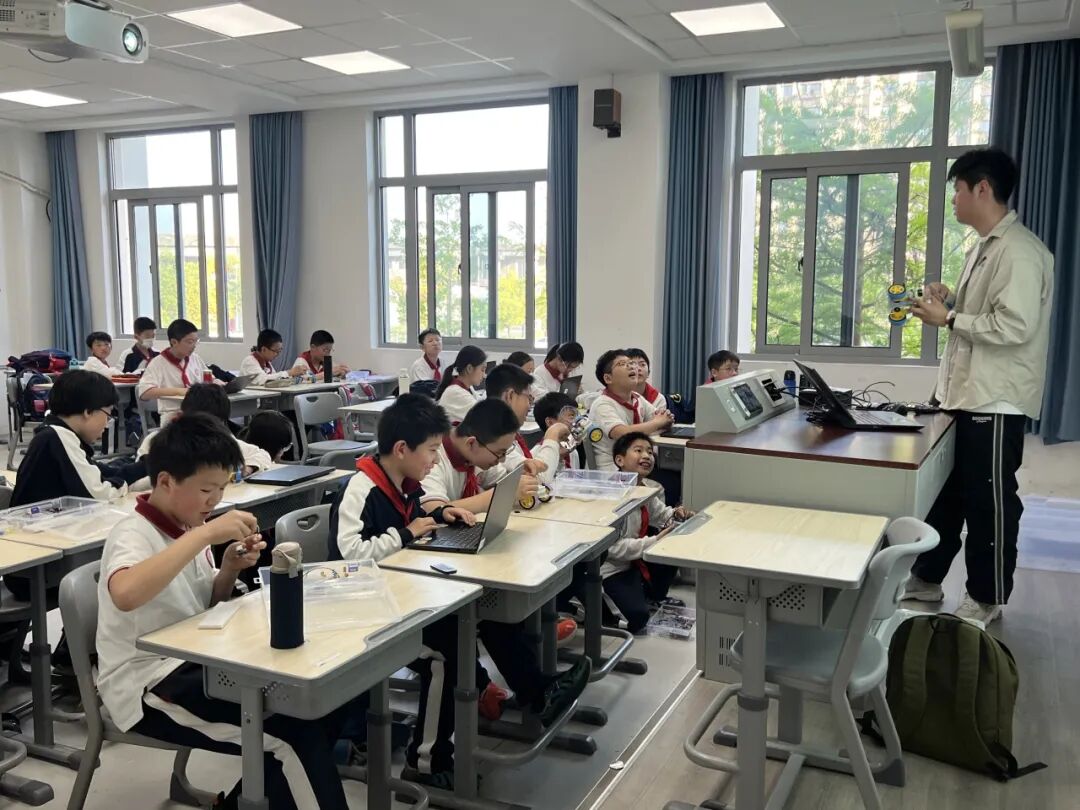
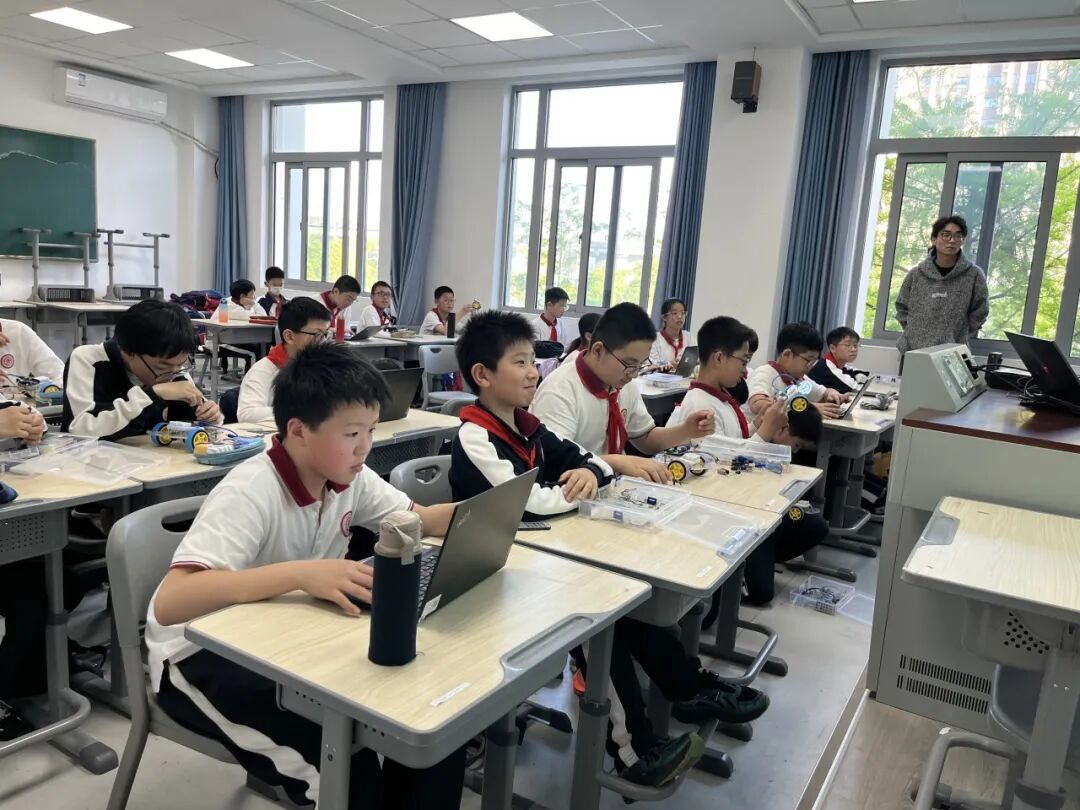
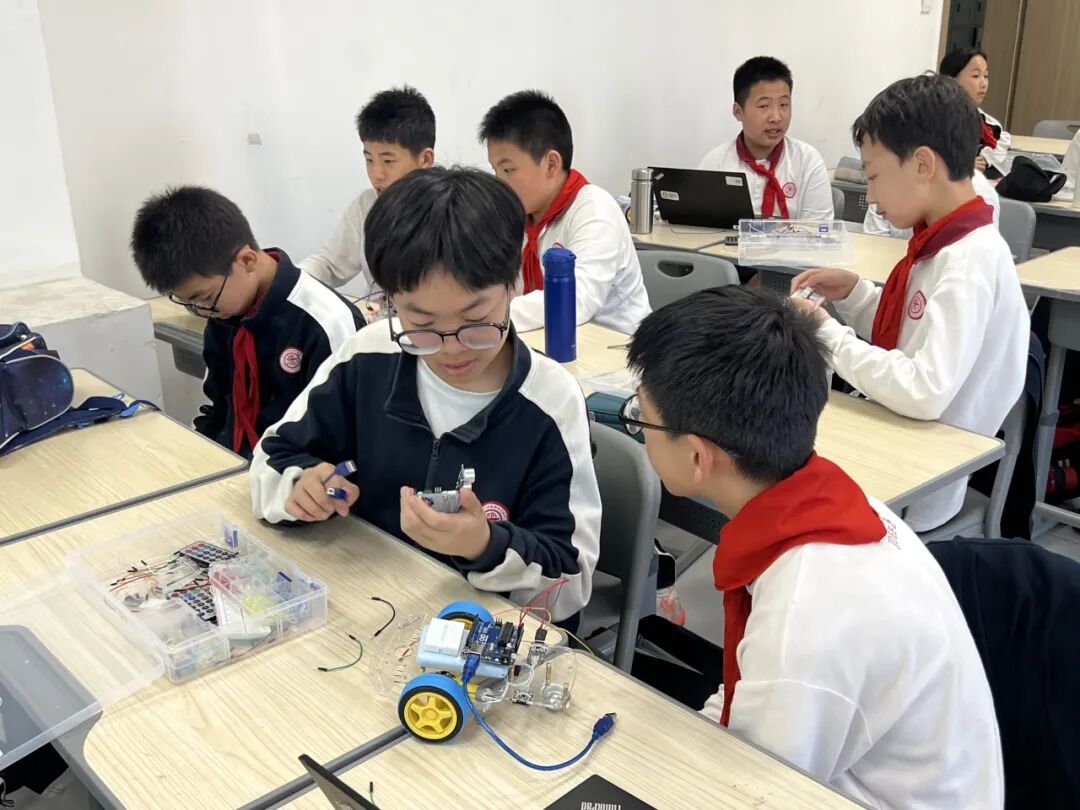
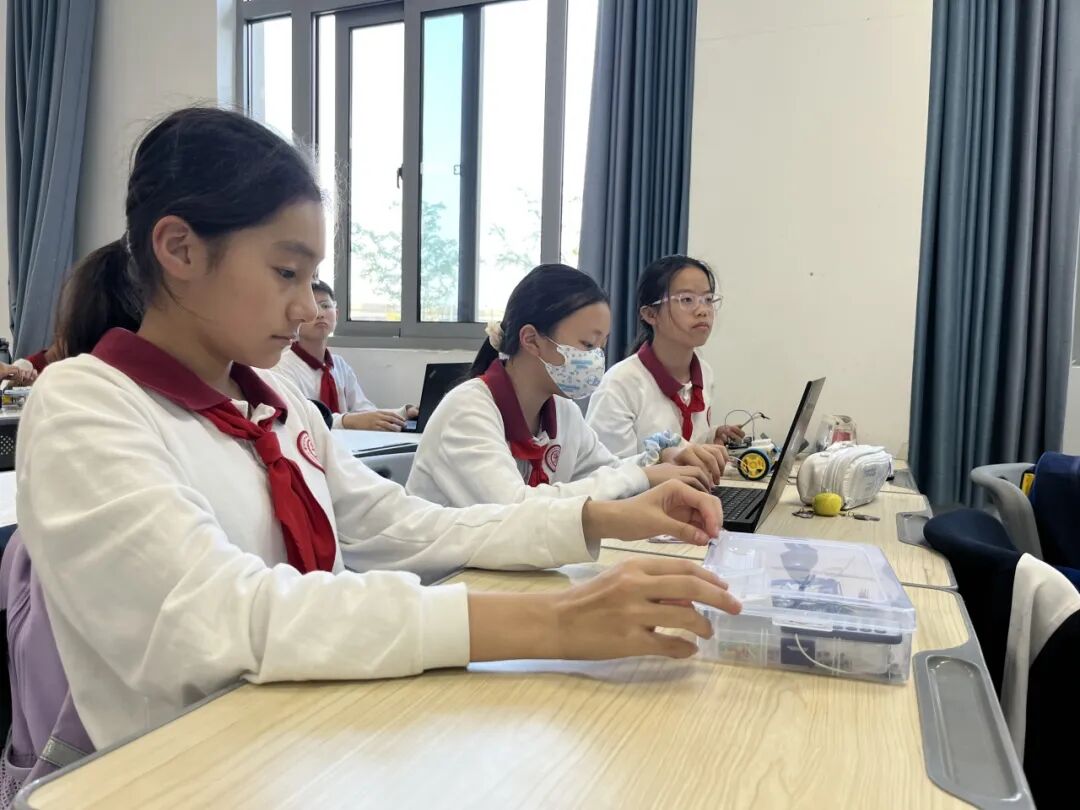
As the laboratory echoed with the buzzing of motors, the students’ fingers danced gracefully on the breadboard. Some held their breath, carefully calibrating the encoder, as if tuning the heartbeat of a mechanical heart; another group made the intelligent car trace an elegant S-shaped path on the floor, as if writing a love poem in electronic ink. When the first autonomous obstacle-avoiding car shattered the barrier of light and shadow, the classroom erupted in cheers, akin to the sparks of wisdom igniting when gears mesh. Those motor drive modules and ultrasonic sensors that once lay in the parts box now transformed into stars dancing in the palms of the students, sketching the outline of future transportation in the galaxy woven by Arduino code.
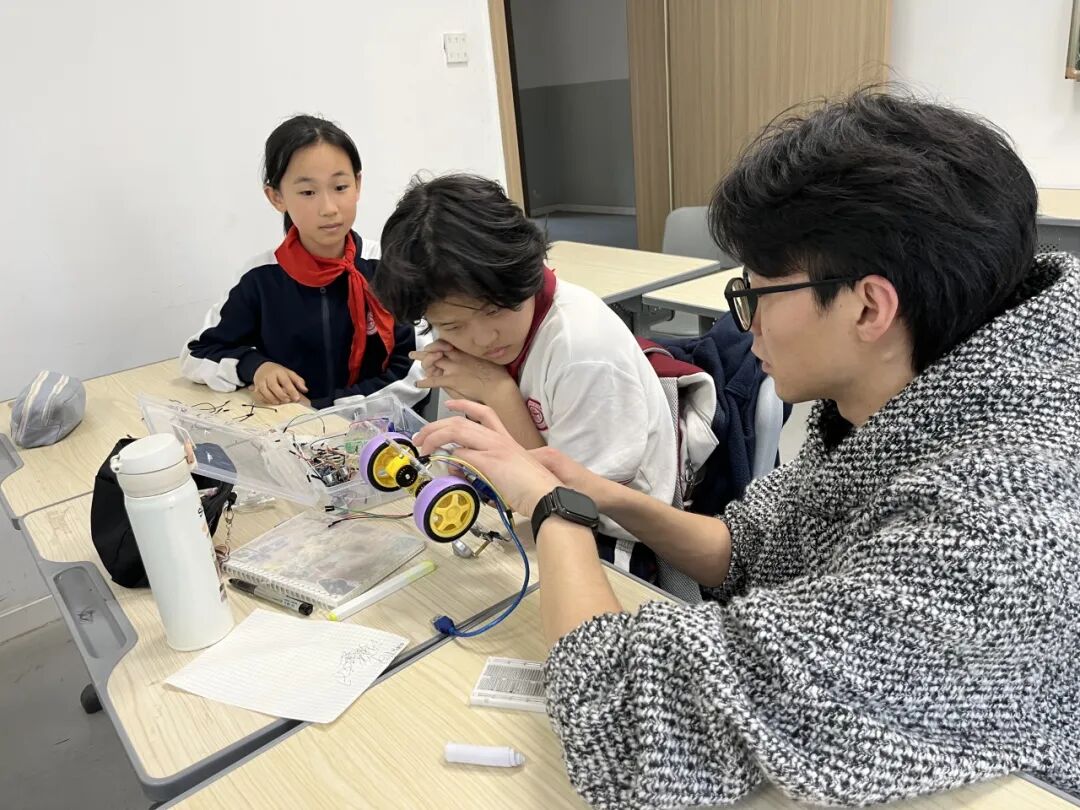
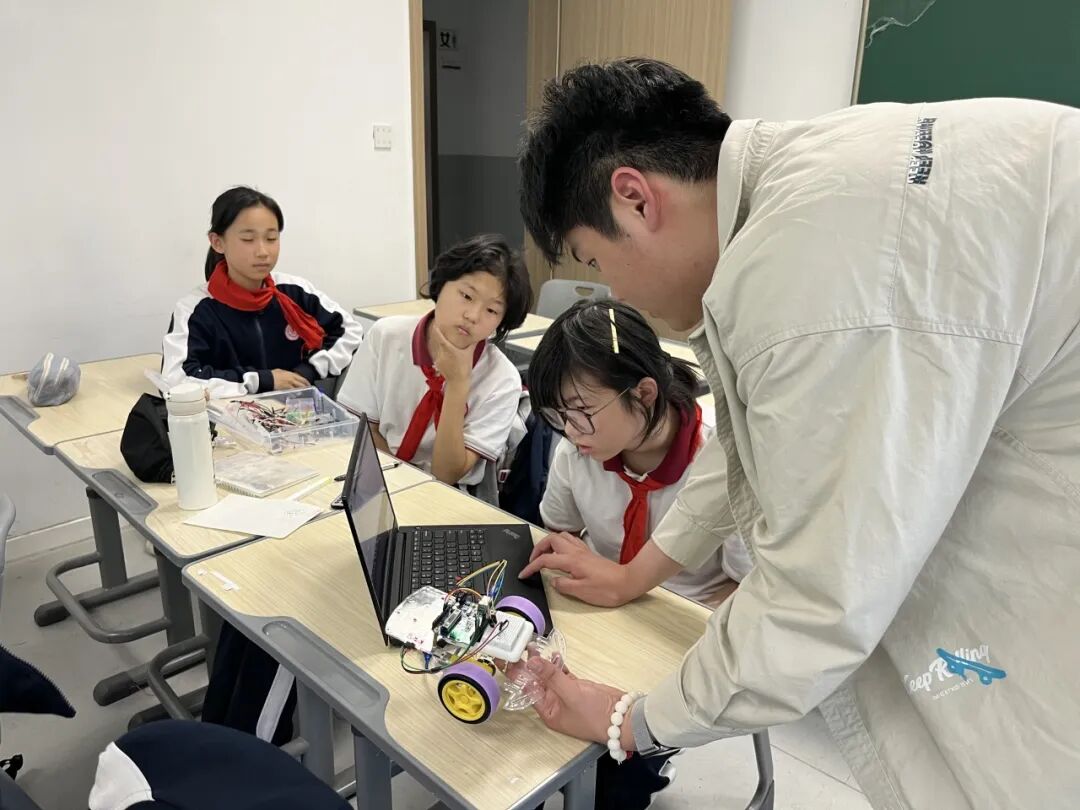
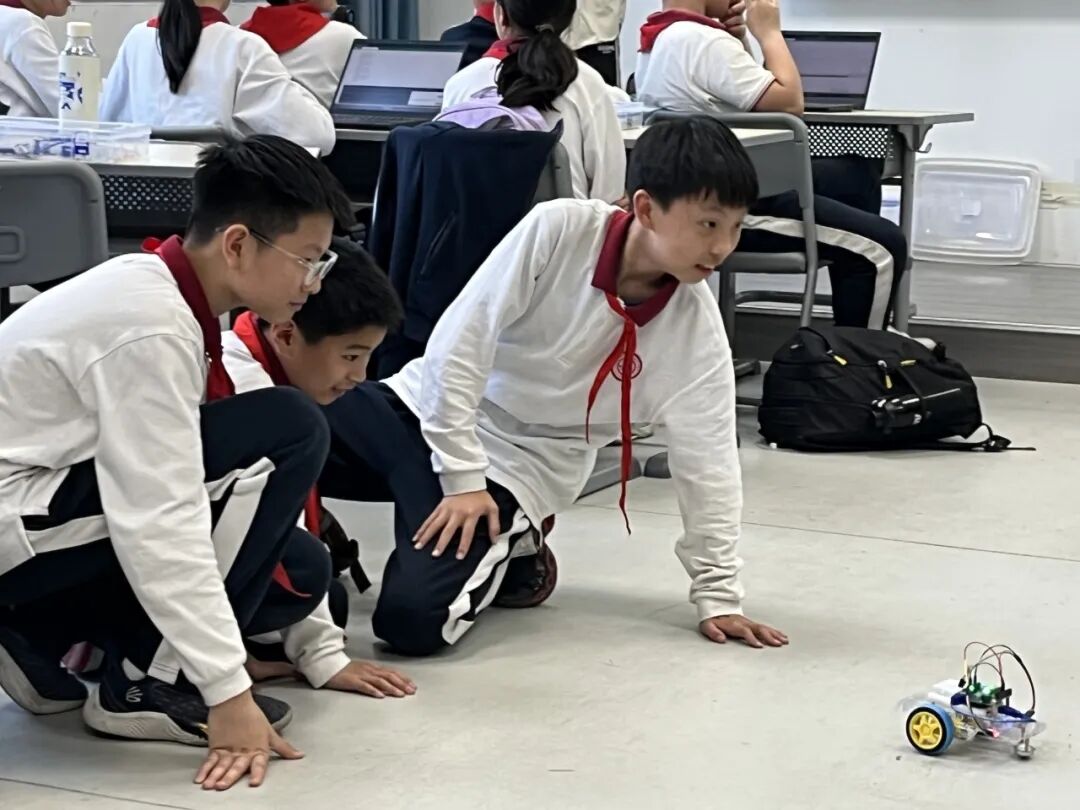
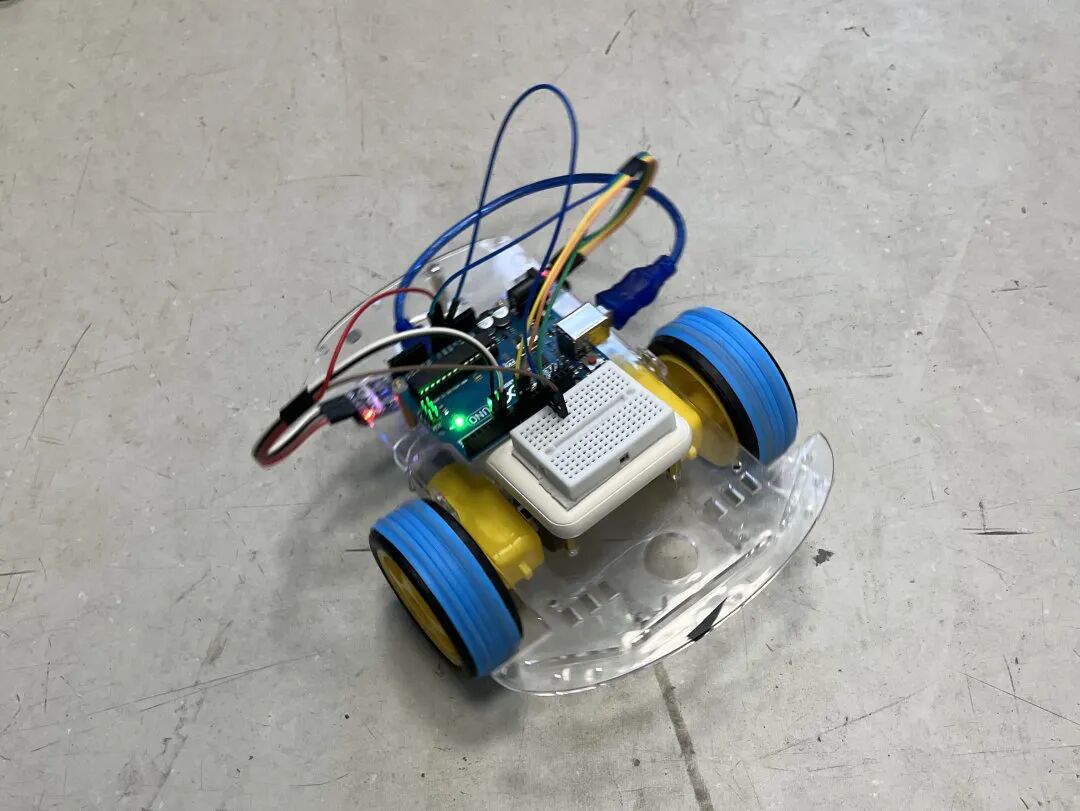
In this concerto of mechanics and electronics, even the rotation of a screwdriver contains the rhythm of technological enlightenment. As the sunset gilded the experimental table, some children remained dedicated to adjusting the steering parameters—they were inscribing the most moving footnotes of this spring with their tender code: the Arduino design course is not only the key to autonomous driving but also a starlight compass that allows the youth to touch the stars and the sea.


Student Reflections

Class 5, Pre-Intermediate 肖怡岚
I often wonder how cars can drive automatically. This Arduino design course finally helped me understand the principles behind it; it turns out you need an ultrasonic sensor, a driver, and a controller. At first, I was a bit flustered while building it, but then I calmed down to observe and think, connecting one wire after another, and suddenly the light turned on, and the car started moving. I was so excited. The creative ideas of my classmates in class also made everyone laugh. This kind of course makes learning enjoyable.
Class 5, Pre-Intermediate 张圣尧
This week in programming class, we used the Arduino board and motor module to make an electric car. At first, I was flustered by the complex wiring and unfamiliar code, but under the teacher’s guidance, we carefully assembled the motor and main control board, repeatedly debugging the code. When the car successfully started, the sense of achievement was overwhelming. We made the cars chase each other, some cars skidding playfully while turning, and others skillfully weaving through the cheers of everyone. This joy of creation and interaction has made me even more fascinated with this electronic design course!
Class 5, Pre-Intermediate 邵逸辰
Today’s programming class was amazing! Our group input commands for the car using a computer, but it kept turning in circles. The teacher reminded us to check each symbol, and sure enough, we found that we missed a comma. Later, we added a “delay command” to the motor, and the car finally obediently moved forward. It turns out that code is like writing a “manual” for machines; even one wrong character can cause issues! Working with my classmates to modify and change, turning a bunch of letters into a moving car, was so fulfilling! This practice not only taught me how to communicate with machines using code but also made me feel the power of teamwork—next class, we will challenge more complex ultrasonic sensor programming to make the car avoid obstacles!
Class 5, Pre-Intermediate 张依琳
I really enjoy the Arduino course, especially assembling a bunch of components and programming them to make them move; it feels incredibly rewarding! The course made me realize that hardware and software are like the two legs of a car; they must work well together to run smoothly.
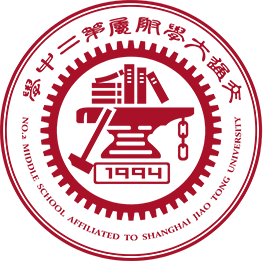
Shanghai Jiao Tong University Affiliated Second Middle School
Website: http://www.jd2fz.sjtu.edu.cn
WeChat ID: shjd2fz
